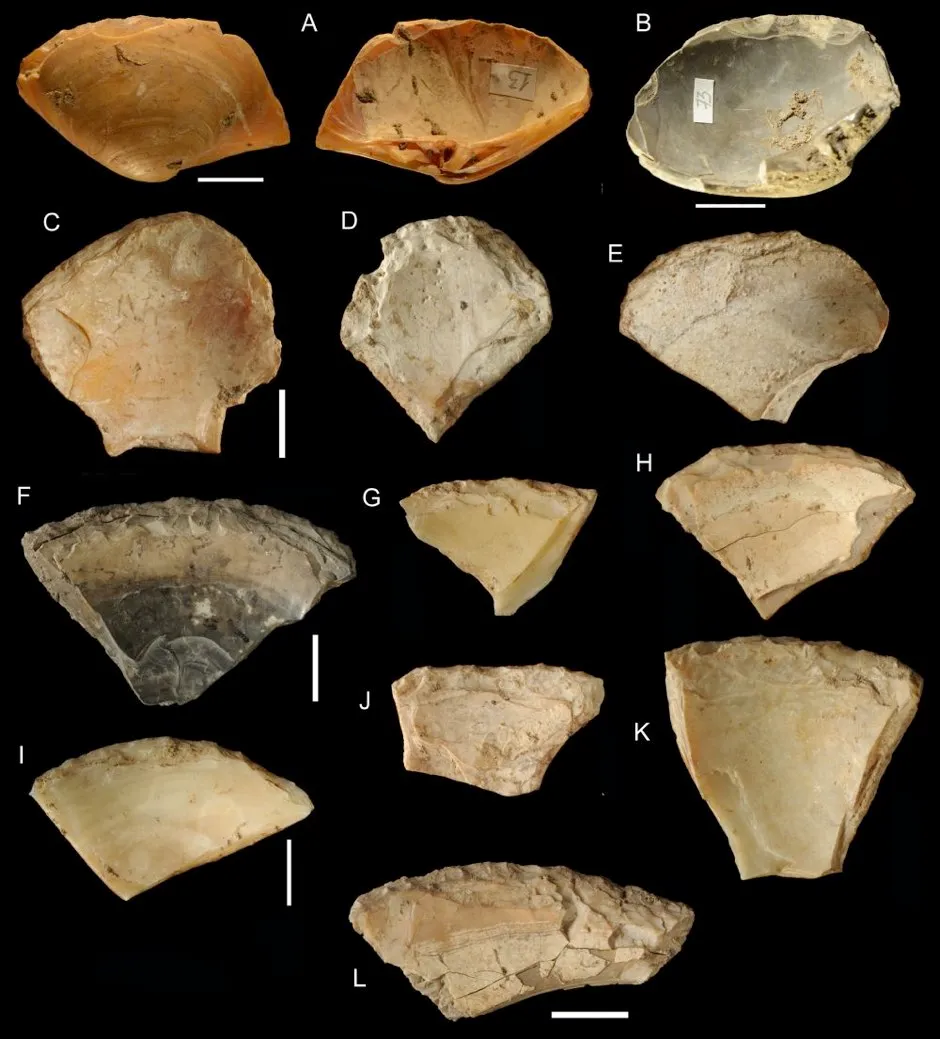Just like a lot of people today, Neanderthals seemed to enjoy spending time at the beach, and even collected seashells, research suggests.They may even have dived into the Mediterranean sea to gather clam shells for tools.
The findings come from discoveries made in Grotta dei Moscerini, a cave that sits 3 metres above a beach in what is today the Latium region of central Italy. Neanderthals also collected volcanic rock from the beach and coastal waters during the Middle Palaeolithic, according to a study published in the PLOS ONE journal.
The ancient humans are known to have used tools, but the extent to which they were able to exploit coastal resources has been less clear.
In this study, a team led by Paola Villa of the University of Colorado Boulder explored artefacts from the cave, one of two Neanderthal sites in Italy with an abundance of hand-modified clam shells, dating to around 100,000 years ago. The authors examined 171 modified shells, most of which had been retouched to be used as scrapers.
Read more about Neanderthals:
- The invention of spears and bows and arrows may have helped early humans drive Neanderthals to extinction
- 6 reasons why Neanderthals aren't the brutish, primitive species we once thought
They found that nearly three quarters of the Moscerini shell tools had opaque and slightly abraded exteriors, as if they had been sanded down over time.This was in keeping with what you would expect to see in shells that had washed up on a sandy beach.
However, the rest had a shiny, smooth exterior.Those shells, which also tended to be a little bit bigger, had to have been plucked directly from the seafloor as live animals.
Dr Villa said: “It’s quite possible that the Neanderthals were collecting shells as far down as two to four metres. Of course, they did not have Scuba equipment.”

In the same cave sediments, the authors also found abundant pumice stones likely used as abrading tools.
Researchers say the findings join a growing list of evidence that Neanderthals in Western Europe were in the practice of wading or diving into coastal waters to collect resources long before Homo sapiens brought these habits to the region.
The authors add: “Skin diving for shells or fresh water fishing in low waters was a common activity of Neanderthals, according to data from other sites and from an anatomical study published by E Trinkaus. Neanderthals also collected pumices erupted from volcanoes in the gulf of Naples and transported by sea to the beach.”
Reader Q&A: How did cavemen cut their toenails?
Asked by: Edward Seymour, Hove
They could theoretically have used a flint edge to trim them, or a rough stone to file them down. However, we don’t have any firm evidence of ‘cavemanicure’ at all, since no fingernails or toenails survive from any Stone Age burial sites.
If you spend your day walking barefoot and scraping up roots with your hands, your nails will wear down naturally, which is why they have evolved to keep growing throughout our lives.
Read more:
